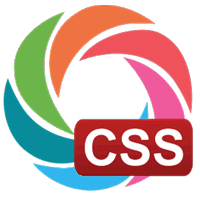 In order for a web site to be available on the World Wide Web, it must be hosted on a server. There are several different ways to accomplish this. Most large hosting companies will have their own servers and the network infrastructure needed for their site to be available on the Web. However, the equipment and technical resources needed to set up such a system are very expensive, beyond the reach of smaller companies, organizations and individual users. Cascading style sheets, or CSS, is a language designed to allow a designer to specify how a document should be presented. CSS can be used with any markup language, but its main use is with the HTML code that makes up a web page. In order for a web site to be available on the World Wide Web, it must be hosted on a server. There are several different ways to accomplish this. Most large hosting companies will have their own servers and the network infrastructure needed for their site to be available on the Web. However, the equipment and technical resources needed to set up such a system are very expensive, beyond the reach of smaller companies, organizations and individual users. Cascading style sheets, or CSS, is a language designed to allow a designer to specify how a document should be presented. CSS can be used with any markup language, but its main use is with the HTML code that makes up a web page. |
 For small businesses looking to establish a presence on the World Wide Web, one of the hurdles that must be crossed is the design of the web site. There are many different types of business web site, ranging from those just wishing to present some information to their clients to full-blown e-commerce sites. These different types of sites all have one thing in common – someone has to design the site.
For small businesses looking to establish a presence on the World Wide Web, one of the hurdles that must be crossed is the design of the web site. There are many different types of business web site, ranging from those just wishing to present some information to their clients to full-blown e-commerce sites. These different types of sites all have one thing in common – someone has to design the site.
 In order for a web site to be available on the World Wide Web, it must be hosted on a server. There are several different ways to accomplish this. Most large hosting companies will have their own servers and the network infrastructure needed for their site to be available on the Web. However, the equipment and technical resources needed to set up such a system are very expensive, beyond the reach of smaller companies, organizations and individual users. Cascading style sheets, or CSS, is a language designed to allow a designer to specify how a document should be presented. CSS can be used with any markup language, but its main use is with the HTML code that makes up a web page.
In order for a web site to be available on the World Wide Web, it must be hosted on a server. There are several different ways to accomplish this. Most large hosting companies will have their own servers and the network infrastructure needed for their site to be available on the Web. However, the equipment and technical resources needed to set up such a system are very expensive, beyond the reach of smaller companies, organizations and individual users. Cascading style sheets, or CSS, is a language designed to allow a designer to specify how a document should be presented. CSS can be used with any markup language, but its main use is with the HTML code that makes up a web page. Hypertext Markup Language, or HTML, is the normal language used to design pages meant for use on the World Wide Web. By using special commands, known as tags, web page designers can format a text document for presentation, using different font types, colors and sizes. HTML also allows a web page designer to create the hyperlinks that allow users to jump from page to page, and to embed images or other files within a web page if desired.
Hypertext Markup Language, or HTML, is the normal language used to design pages meant for use on the World Wide Web. By using special commands, known as tags, web page designers can format a text document for presentation, using different font types, colors and sizes. HTML also allows a web page designer to create the hyperlinks that allow users to jump from page to page, and to embed images or other files within a web page if desired. Originally all web pages on the Internet were static pages, which is to say that the content of each page remained constant whenever it was viewed. In contrast to this, a dynamic web page can change the way in which is presented depending on various types of user input. Some examples of this include displaying the current date or time, adding calendars to pages, generating forms to collect data or enabling a log-in to a forum or database. There are two ways in which this is done, client-side scripting or server-side scripting.
Originally all web pages on the Internet were static pages, which is to say that the content of each page remained constant whenever it was viewed. In contrast to this, a dynamic web page can change the way in which is presented depending on various types of user input. Some examples of this include displaying the current date or time, adding calendars to pages, generating forms to collect data or enabling a log-in to a forum or database. There are two ways in which this is done, client-side scripting or server-side scripting. When designing a new web site there are many potential pitfalls for the unwary designer. These are just a few hints and tips to try and help the novice web master in their efforts to produce a web site of which they can be proud. A short article on web site design such as this cannot hope to cover all of the many facets of the subject of web design. There are plenty of resources available to help your study of this - a quick visit to a book store will show that.
When designing a new web site there are many potential pitfalls for the unwary designer. These are just a few hints and tips to try and help the novice web master in their efforts to produce a web site of which they can be proud. A short article on web site design such as this cannot hope to cover all of the many facets of the subject of web design. There are plenty of resources available to help your study of this - a quick visit to a book store will show that. When setting up a new web site nowadays, the most important factor to keep in mind is the content. Yes, keywords are still important, but the days when a web page could be judged solely on the keyword content are long gone. Why is this so? Two reasons. Firstly, in order to sell you need not only to attract visitors to your web site, but also when they do arrive you need to keep them there. Secondly, the way that web sites are ranked nowadays relies much more on the content of the site, and on the relevance of that content to the main subject of the web site.
When setting up a new web site nowadays, the most important factor to keep in mind is the content. Yes, keywords are still important, but the days when a web page could be judged solely on the keyword content are long gone. Why is this so? Two reasons. Firstly, in order to sell you need not only to attract visitors to your web site, but also when they do arrive you need to keep them there. Secondly, the way that web sites are ranked nowadays relies much more on the content of the site, and on the relevance of that content to the main subject of the web site. One of the terms that newcomers to web design or web hosting may fail to understand is the word script or scripts. What is meant by this term? In simple terms, a script is a segment of computer code that can extend or alter the way that the web browser interprets the HTML code that makes up a web page. The result of this type of alteration is known as Dynamic HTML or DHTML. Such scripts can be split into two different classes; client-side scripts, which are executed by the users’ own web browser software, or server-side scripts, where the HTML to be sent to the browser is altered by a script running on the web server itself. Let’s take a closer look at each type.
One of the terms that newcomers to web design or web hosting may fail to understand is the word script or scripts. What is meant by this term? In simple terms, a script is a segment of computer code that can extend or alter the way that the web browser interprets the HTML code that makes up a web page. The result of this type of alteration is known as Dynamic HTML or DHTML. Such scripts can be split into two different classes; client-side scripts, which are executed by the users’ own web browser software, or server-side scripts, where the HTML to be sent to the browser is altered by a script running on the web server itself. Let’s take a closer look at each type. Flash is a multimedia technology that can be used to add animation or video to a web page. Since its introduction in 1996, Flash has become the industry standard for adding such content, with statistics suggesting that almost all desktop computers in the United States have a version of the Flash player software installed. Popular video sites such as YouTube use Flash to display the videos to their users.
Flash is a multimedia technology that can be used to add animation or video to a web page. Since its introduction in 1996, Flash has become the industry standard for adding such content, with statistics suggesting that almost all desktop computers in the United States have a version of the Flash player software installed. Popular video sites such as YouTube use Flash to display the videos to their users. If you are designing a web site, one principle should be considered as the most important point of the design. That principle is site navigation. When a user arrives at your web site he will not want to spend his valuable time searching for ways to move around the site. Make sure that all of your links are laid out in a simple and easy to read form. Over recent years the trend has been for site links to appear in one of two places - either along the top of the browser window, below the site name or logo, or running down the left-hand side. This works, and more importantly, will be an obvious place for the visitor to look. You may feel that you want to buck the trend by placing your site links in a different place - just remember that standards evolve for a reason.
If you are designing a web site, one principle should be considered as the most important point of the design. That principle is site navigation. When a user arrives at your web site he will not want to spend his valuable time searching for ways to move around the site. Make sure that all of your links are laid out in a simple and easy to read form. Over recent years the trend has been for site links to appear in one of two places - either along the top of the browser window, below the site name or logo, or running down the left-hand side. This works, and more importantly, will be an obvious place for the visitor to look. You may feel that you want to buck the trend by placing your site links in a different place - just remember that standards evolve for a reason.